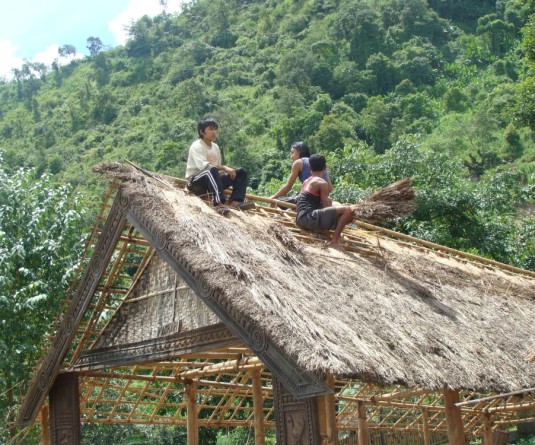
In indigenous societies, language is central to passing on of traditional knowledge, wisdom and art
Abokali Jimomi
Kohima | May 18
Abokali Jimomi
Kohima | May 18
Nagaland exists in an English-dominated world: school textbooks, newspapers, TV shows, news channels, magazines, books, food and medicine labels, even major public functions and church services use the English language. What would happen to our lives if we were to wake up tomorrow and find that Mandarin had replaced English print matter?
The other major influence is Hindi – Hindi songs, Hindi films, hundreds of Hindi TV channels with mass-mesmerizing reality shows and soaps, targeting children, housewives and TV addicts, and especially viewers in rural areas who flock to the TV owner’s house, where the TV is their only link to the outside world.
Pre-school kids are taught nursery rhymes in English; ‘Private School’ goers in Nagaland hardly learn any Naga language. If the education policy excludes your own language in your own land where your ancestors for generations lived, conversed, sang and dreamed in that now “excluded” language, what can the student do? In a globalized world, should the need to learn one’s own language be termed as “stuck in the past” syndrome? Are Naga languages worth speaking?
A. Wurm, co-author of The Atlas of World´s Languages in Danger of Disappearing, said “Each language reflects a unique world view and culture complex, mirroring the manner in which a speech community has resolved its problems in dealing with the world, and formulated its thinking, its system of philosophy and understanding of the world around it. ... However, with the death and disappearance of such a language, an irreplaceable unit in our knowledge in understanding of human thought in world view is lost forever.”
The present Naga generation has limited space to communicate, use or write in our own Naga languages. Apart from one or two tribes, many Nagas have no formal curriculum or institution teaching their language… whereas it is easy to enroll for Korean, Mandarin or French classes even in Nagaland.
We wonder if our native languages are actually being forced to extinction. Many of our cultural knowledge and practices have vanished along with the decreasing use of our languages. For example, “Leshe”, a Sümi metaphorical form of poetry, recited in a peculiar tune, usually containing information of our social rites and relationships, and depicting historical tales, is no longer understood by younger speakers, and these poems can be rarely found now. On the other hand, we memorize William Shakespeare’s ‘All the World’s a Stage’ for our exams to get the ‘Passed’ stamp – which is nothing bad, but shouldn’t learning our old poetry be given importance too?
How helpful is it that our educational system and public information dissemination methods are not really conscious of our region’s languages and history? We form a significant geographical portion of the country, but we also speak languages totally different from English, Hindi and Urdu? Is the survival of this region’s cultural knowledge encoded in our ethnic languages important? Or because languages and cultures are bound to die or change, minority languages have lesser significance? - A matter of numbers.
In a culturally diverse country like India, should languages of minorities be abandoned? Unlike Tamil or Marathi, Naga languages at this rate, with no script, no documentation, possessing few rudimentary dictionaries, and with native speakers compelled to shift to other languages, may have lesser and lesser use in the future.
The National Geographic’s ‘Vanishing Voices’ by Russ Rymer describes “the ongoing collapse of the world’s biodiversity is more than just an apt metaphor for the crisis of language extinction. The disappearance of a language deprives us of knowledge no less valuable than some future miracle drug that may be lost when a species goes extinct….When small communities abandon their languages and switch to English or Spanish, there is a massive disruption in the transfer of traditional knowledge across generations—about medicinal plants, food cultivation, irrigation techniques, navigation systems, seasonal calendars.”
If learners deliberately choose English and Hindi, that is a different matter. However, with Naga languages, the issue is different and it needs addressing through our educational policies, although the onus of keeping it alive also lies with the respective speech communities.






